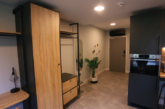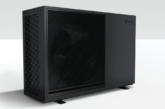The concept of a ‘smart home’ is not new. Homeowners have been customising and enhancing their houses with smart technology for years. While traditionally this has focused on voice control, consumers are now looking for the next frontier.
By Nico van der Merwe, VP of Home & Distribution at Schneider Electric
At the same time, the need to achieve net zero has accelerated, with energy-efficient homes and lower heating bills critical to meeting the ambitious 2050 goal. Sustainability has hit the mainstream and now drives purchasing decisions. These two trends are driving the next generation of smart heating systems, with new functions and benefits.
Smart surrounds
We now expect personalisation as standard from the tools and technologies we use. The next stage for heating is control and scheduling in each room independently. From the point of view of comfort, the ambient temperature for each room of the house differs – the bedroom usually needs to be cooler and the bathroom warmer. We control our lights switch-to-switch and we control our water tap-to-tap – why don’t we control our heat room-to-room?
Traditional thermostats and radiator controls simply aren’t efficient or measurable. A smart room thermostat and multi-room system measures and controls the temperature of each room. This level of regulation has a huge impact on comfort, convenience and energy bills. Smart heating systems now enable users to personalise their home environment according to their needs by allowing them to control the temperature and schedule in their home completely independently.
Flame on (or off)
With the explosion of apps, it’s now possible to take control of at-home appliances including heating, lighting and entertainment systems via a smartphone. Not only does this make life easier, for heating in particular it allows individuals to take control of their energy on the go to reduce their long-term energy consumption. Heating has also joined the smart home assistant revolution, which makes control easier than ever. You can now ask Google Assistant or Amazon Alexa to set your heating at a certain temperature, increase/decrease the temperature, and check what the current setting is.
Data: Getting to know you
The new era in heating solutions delivers complete insight into usage patterns and preferences. Smart heating management systems can now understand how you interact with your heating, how the temperatures in each room change throughout the day, how occupancy impacts levels, and your optimal settings. In a data driven world, this insight is crucial as it enables greater control and personalisation.
Pioneering smart heating systems now come as a single solution, linking radiators and thermostats through IoT technology. A phone app enhances convenience and control, and analytics optimises cost and comfort. These solutions allow users to monitor the temperatures of individual rooms and change them remotely, wherever they are.
Homeowners are now used to the convenience and control that plug-and-play smart solutions provide, so it’s no surprise that they now strive for that same technology in the home. Smart heating systems offer exactly that – they have no wires, don’t require expert installers and are intuitive by design. What’s more, they provide the insight and ability to reduce energy consumption and improve sustainability – factors which have become fundamental to home improvement projects.
Heating solutions that provide greater control and allow smarter, more productive homes will become the norm in the future. The enhanced level of insight provided by these technologies will not only save money and boost our comfort at home, they will also be critical in reducing household emissions.









